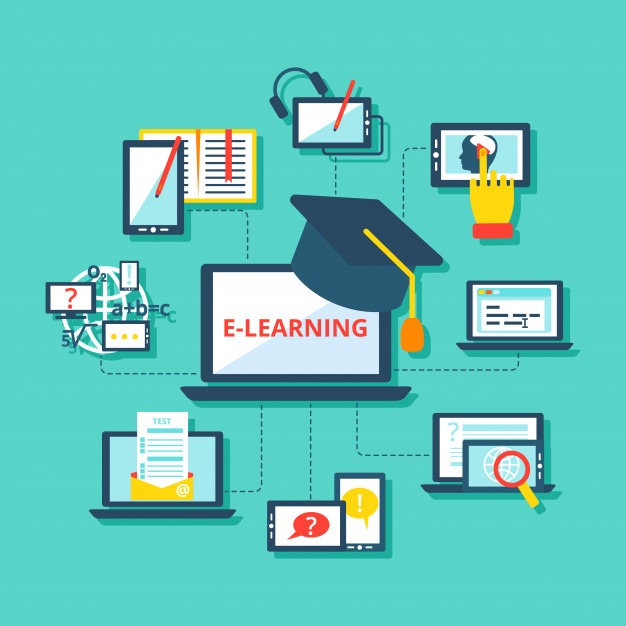Rise of E-learning
E-learning is a rapidly growing industry, the effects of which we can trace back to the 1980s and even well before that (in the form of distance learning and televised courses) – these will be discussed later in this ebook. Now that affordable e-learning solutions exist for both computers and the internet, it only takes a useful e-learning tool for education to be facilitated from virtually anywhere. Technology has advanced so much that the geographical gap is bridged with tools that make you feel as if you are inside the classroom. E-learning offers the ability to share material in all kinds of formats such as videos, slideshows, word documents, and PDFs. Conducting webinars (live online classes) and communicating with professors via chat and message forums is also available to users.
In the fast-paced world of e-learning, the available technologies to make a course new and exciting are always changing. Course content can and should be updated quickly to give students the latest information. This is especially important if the e-learning training is being given to employees in a sector where keeping up-to-date on industry developments is of the utmost importance. This is one reason why many businesses are now offering training via e-learning – other reasons include low costs and the ability for employees to study in their own time and place.
Overall, traditional learning is expensive, takes a long time, and the results can vary. The importance of e-learning is now a given fact, and it can offer an alternative that is much faster, cheaper, and potentially better.
History
The term “e-learning” has only been in existence since 1999, when the word was first utilized at a CBT systems seminar. Other words also began to spring up searching for an accurate description, such as “online learning” and “virtual learning”. However, the principles behind e-learning have been well documented throughout history. There is even evidence that suggests that early forms of e-learning existed as far back as the 19th century.
Long before the internet was launched, distance courses were being offered to provide students with education on particular subjects or skills. In the 1840′s, Isaac Pitman taught his pupils shorthand via correspondence. This form of symbolic writing was designed to improve writing speed and was popular amongst secretaries, journalists, and other individuals who did a great deal of note-taking or writing. Pitman, a qualified teacher, was sent completed assignments by mail, and he would then send his students more work to be finished using the same system.
In 1924, the first testing machine was invented. This device allowed students to test themselves. Then, in 1954, BF Skinner, a Harvard Professor, invented the “teaching machine”, which enabled schools to administer programmed instruction to their students. However, it wasn’t until 1960 that the first computer-based training program was introduced to the world. This computer-based training program (or CBT program) was known as PLATO-Programmed Logic for Automated Teaching Operations. It was initially designed for students attending the University of Illinois but ended up being used in schools throughout the area.
The first online learning systems were only set up to deliver information to students but as we entered the 70s online learning became more interactive. In Britain, the Open University was keen to take advantage of e-learning. Their system of education has always been primarily focused on learning at a distance. In the past, course materials were delivered by post, and correspondence with tutors was via mail. With the internet, the Open University began to offer a broader range of interactive educational experiences and faster correspondence with students via email, etc.

With the introduction of the computer and internet in the late 20th century, e-learning tools and delivery methods expanded. The first MAC in the 1980′s enabled individuals to have computers in their homes, making it easier for them to learn about particular subjects and develop specific skill sets. Then, in the following decade, virtual learning environments began to truly thrive, with people gaining access to a wealth of online information and e-learning opportunities.
By the early 90s, several schools had been set up that delivered courses online only, making the most of the internet and bringing education to people who wouldn’t previously have attended a college due to geographical or time constraints. Technological advancements also helped educational establishments reduce distance learning costs, a saving that would also be passed on to the students – helping bring education to a broader audience.
In the 2000′s, businesses began using e-learning to train their employees. New and experienced workers alike now had the opportunity to improve their industry knowledge base and expand their skill sets. At home, individuals were granted access to programs that offered them the ability to earn online degrees and enrich their lives through expanded knowledge.


